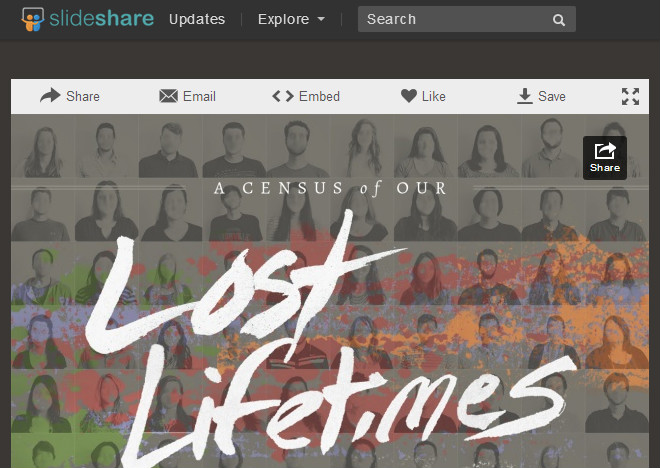As SlideShare itself states, its goal is simple: to share knowledge online. Over the past eight years, SlideShare has worked tirelessly to meet that goal, becoming one of the most popular and useful sites for sharing professional content and presentation related media. Now, over two years since becoming part of the LinkedIn fold, SlideShare has responded to yet another ever-growing professional need: the ability to easily share infographics. Here’s why:
Increased Performance
SlideShare had previously enabled users to share documents, PDFs, webinars, photos, videos and other presentations, and now infographics can be added to that lengthy list.
Although users have been able to upload infographics for a while now, SlideShare recognized the need to launch a new player specifically designed to allow the best possible infographic viewing experience.
The new infographic player increases the ease of use and functionality by recognizing infographics upon upload, adding them to the directory, and optimizing the viewing. As with other content types, users can upload, embed and share infographics, as well as take advantage of SlideShare’s analytics to track how many users have viewed, downloaded or otherwise interacted with their content. For example, a user might locate a useful infographic detailing the years of life lost due to addiction and use SlideShare to share the same infographic with others. Statistics regarding views, shares, embeds, downloads and other data pertaining to the graphic are presented clearly and concisely at the bottom of each page.

Why Infographics?
Why the big push to enable and optimize the use and upload of infographics? Though some are still unwilling to admit it, infographics are a powerful—and ever growing—communication tool.
Infographics cover much of the same territory as previously existing tools. Pie charts, bar graphs, Venn diagrams and other school staples have long been used to provide a visual representation of data. While many infographics integrate the aforementioned classics, they do so in a new and dynamic way.
For the most part, once you have seen one pie chart, you have seen them all. Although many beginners and small businesses use ready-to-go templates when creating their infographics, the best graphics are unique and dynamic. Those creating the best infographics recognize that viewers will skip graphics that look too similar to designs they have seen before and therefore strive to create content that is not only informative, but one-of-a-kind and creative.
Info + Graphics
Over half of the population can be categorized as visual learners. Couple that statistic with the increased need-for-speed mindset when it comes to online information acquisition, and the result is infographics that pack the most information possible into the slickest, most memorable form available.
Whether you’re sharing company reports with colleagues or seeking to provide meaningful, shareable content with your viewers, infographics help increase views and improve retention. By coupling engaging information with relevant graphics, infographics help ensure that viewers retain facts, figures and messages after they leave your site. Well-chosen graphics and a cohesive, organized and streamlined layout provide visual cues that both encourage viewer engagement and improve retention.
Successful Graphics
Successful infographics involve a bit more finesse than simply grabbing the nearest clipart, adding a bold color scheme and cramming in as many statistics as possible. Like any good graphic work—such as logos, web design and other branding techniques—infographics take a keen eye and a subtle touch.
For those who may not be gifted in the graphic arts, never fear, agencies of all sizes offer a wide range of services, including infographic creation. For those wishing to strike out on their own, there are a few basic tips to keep in mind when creating a graphic.
- If you’re going to DIY, give your audience some credit and don’t use a template. Viewers will spot a cookie-cutter attempt a mile away and wisely pass on by.
- Learn the basics of good design. For example, less is more when it comes to fonts. Pick two or three fonts to use in your presentation. A good rule of thumb is to use one serif and one sans-serif font.
- Keep the text to a minimum. Viewers flock to infographics because they provide concise information. Pair minimal text with memorable graphics.
Infographics not only provide engaging content but also safe SEO. For companies and services seeking to improve traffic or—if they’re lucky—go viral, infographics are invaluable. This is not to say that there is no place for videos, presentations or other forms of communication. However, those who have yet to investigate the benefits of infographics would be wise to take advantage of SlideShare’s newest player.